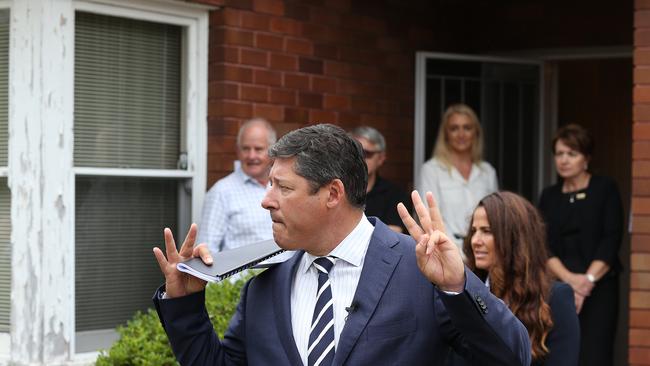Fixed-term rates jump as funding costs rise
A global inflationary surge has prompted a torrent of rises in fixed-term loan interest, with Westpac the latest major bank to unveil increases.

A global inflationary surge and associated moves in the bond market have prompted a torrent of rises in fixed-term loans in 2022 and last year, with Westpac the latest major bank to unveil a full slate of increases.
On Thursday, the nation’s second-biggest home lender after Commonwealth Bank lifted rates by 30 basis points on owner-occupier loans for fixed terms of two, three, four and five years, with one-year loans adjusted by 25 basis points.
It was a similar story for investors, apart from Westpac’s one-year fixed-rate product, which increased by 20 basis points.
The scale and frequency of the changes is reflected in the bank’s latest rate card – less than five months ago, Westpac boasted fixed-rate products starting with a “one”, but its lowest-rate loans now started with a “three”.
While CBA, National Australia Bank and ANZ have yet to respond, the structure of the local market, which is dominated by a small number of big lenders, means that Westpac is unlikely to be an outlier for long.
Steve Mickenbecker, group executive financial services at independent research company Canstar, said the pressure on fixed rates was intensifying as bank funding costs rose.
The circuit breaker – at least for fixed-rate loans – was likely to be a renewed focus on variable rates when the Reserve Bank lifts the cash rate for the first time since November 2010.
“Fixed-rate loans are funded with wholesale debt, and wholesale rates have gone up in anticipation of the RBA increasing the cash rate,” Mr Mickenbecker said. “But the RBA will catch up, and the margin between the lowest variable rate and fixed rates will narrow.”
Expectations of a near-term increase in the cash rate intensified on Tuesday when RBA governor Philip Lowe scrapped the bank’s “patient” approach to monetary policy in his statement after the April board meeting.
Notably, Westpac brought forward its forecast for the first rate increase in the new cycle from August to June.
It now expects increases in most months of the second half of 2022, with the cash rate peaking at 2 per cent in June 2023, instead of 1.75 per cent in February 2024.
Westpac chief economist Bill Evans said the three expected cash-rate increases in 2023 would be in the context of accelerating wage pressures, with the annual rate reaching 4 per cent by mid-2023. All the big four banks are now forecasting lift-off for the cash rate in June, but they expect the cycle of increases to finish at different rates and varying times.
CBA expects the cash rate to reach 1.25 per cent by February 2023, with NAB forecasting a 2.25 per cent rate by August 2024 and ANZ anticipating a 3 per cent rate sometime after 2023.
As in the past, the banks are odds-on to use the cover of an RBA rate increase to rapidly adjust their variable rates, especially when rates are rising.
The repayment gap between the major banks’ average variable rate and three-year fixed-rate loans had already widened to $465 a month for a $500,000 loan, and was wider still at $621 a month for a five-year loan.
While the gap was expected to narrow as variable rates increased, consumers who wisely tapped into the fixed-rate market at its lowest point around the middle of last year will suffer a version of “rate shock” when their two to three-year fixed-rate product expires.
By that time, the cash rate is likely to be in the range of 2 per cent, up from its current level of 0.1 per cent.
Ultra-low interest rates for fixed-term loans attracted a flood of consumers around the middle of last year, with the proportion of new fixed-rate borrowing as a proportion of all borrowing surging to 46 per cent.
The figure fell dramatically to 28 per cent in February as the cost of fixed-rate borrowing surged.
“It’s no wonder borrowers are starting to turn their back on fixing, particularly if they’re looking at big four bank rates,” RateCity research director Sally Tindall said. People looking to lock in a rate should “shop around”.



To join the conversation, please log in. Don't have an account? Register
Join the conversation, you are commenting as Logout